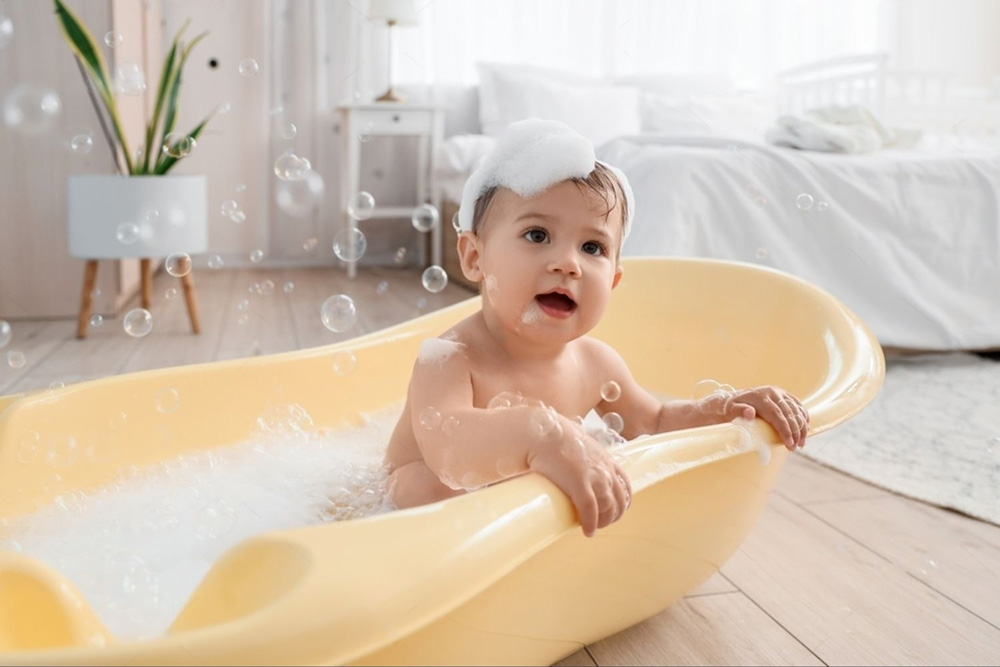
How often should you wash your baby: A guide
Bathing your baby can be a delightful way to bond and care for their delicate skin. It also helps them develop a positive association with bath time and water. However, if you’re new to it, bathing a baby might seem a bit intimidating. Babies can’t support their own bodies yet, and a wet baby can be quite slippery! To help you out, here are some frequently asked questions about baby bathing, including how often you should wash your baby. With a bit of practice, you’ll become an expert in no time.
Preparing for baby’s bath
Before bath time, wash towels and clothes with a detergent that’s gentle on sensitive skin. This ensures everything is ready when your baby is clean. Choose a baby detergent that tackles tough stains while being kind to newborn skin.
Frequency of baby baths
Despite its softness, baby skin is actually quite rough and dries out easily because it doesn’t retain moisture as well as adult skin. The American Academy of Pediatrics suggests sponge baths for the first few weeks until the umbilical stump falls off. After that, bathing your baby two or three times a week is usually enough to keep them clean without drying out their skin.
Choosing a bathing spot
While some parents prefer an infant bathtub, you can also bathe your baby in a regular bathtub or even the sink. If using a slippery surface like a porcelain sink or tub, place a small towel down to prevent slipping. You only need a small amount of water—about two inches.
Water temperature
Baby skin is sensitive to temperature, so use warm, but not too warm, water. Consider setting your water heater to 120 degrees to avoid scalding. If your baby feels chilly during the bath, drape a warm washcloth over their belly and pour warm water over their chest and shoulders.
Soap and shampoo
When selecting products for your baby’s skin, check ingredient labels. If your baby reacts to a product, knowing the ingredients can help identify sensitivities. Choose baby soaps and shampoos free of fragrance and alcohol to minimize irritation. Use a small drop of shampoo and save it for the end of the bath to avoid making your baby feel cold.
Bonus tip
Add a bit of coconut oil to the bath water for its natural moisturizing properties, which can soothe irritated skin.
Post-bath moisturizing
If your baby’s skin seems dry after the bath, use a moisturizer without synthetic fragrances. Baby skin is more permeable than adult skin, so choose gentle products. Coconut oil is a good option as it contains beneficial fatty acids and proteins. Studies suggest it can increase hydration and reduce water loss in very dry skin.
Introducing massage during bath time
Infant massage can strengthen the bond between you and your baby and offers health benefits like soothing colic, improving sleep, and boosting the immune system. You can start with the feet, legs, and hands, then move to the arms, chest, and tummy if your baby is comfortable.
Additional Tips
Our community shared some helpful baby-bathing tips:
- Bathe your baby during a low-stress time of day
- Gather all supplies before starting
- Ensure your baby is well-fed before the bath
- Use music or songs to create a relaxing atmosphere
- Add a few drops of calming essential oil, like lavender or eucalyptus, to the bath
- Massage your baby’s scalp with your fingertips or a soft brush to loosen cradle cap
Enjoy every moment of this special time with your baby!
